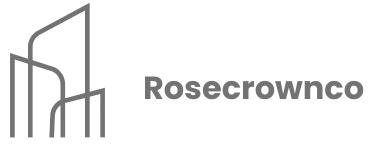Table of Contents
ToggleImagine a house that saves you money, keeps you cozy, and also helps save the planet, pretty neat, right? Welcome to the world of super energy efficient homes, where every nook and cranny is designed with sustainability in mind. These homes not only look good on the outside but also live well within their means, reducing energy bills like a pro. It’s like having your cake and eating it too, only this cake is made from recycled materials and solar panels. Let’s unpack what makes these homes the superheroes of residential living.
What Is an Energy Efficient Home?

An energy efficient home is designed to minimize energy consumption without sacrificing comfort. This means utilizing smart technologies, insulation strategies, and environmentally friendly materials to achieve maximum comfort while using the least amount of energy possible. Think of it as a home that knows how to make the most of every kilowatt.
These homes are not just a trend: they are the result of a growing awareness about our role in climate change. As environmental concerns rise, so does the desire for sustainable living solutions. Many homeowners now seek designs that align their living spaces with their values, eventually leading to a healthier planet.
Key Features of Super Energy Efficient Homes
Super energy efficient homes come packed with innovative features that set them apart from traditional houses. Here are some standout characteristics:
- High-Performance Insulation: Proper insulation retains heat in winter and cool air in summer, reducing the need for heating and air conditioning.
- Energy-Efficient Windows: Double or triple-glazed windows minimize heat loss and maximize natural light.
- Smart Thermostats: These nifty devices learn your schedule, adjusting the temperature to save energy while you’re away.
- LED Lighting: Energy-efficient lighting options use up to 75% less energy than traditional bulbs.
- Energy Star Appliances: These appliances meet strict efficiency guidelines set by the U.S. Environmental Protection Agency.
- Ventilation Systems: Advanced systems recycle indoor air, ensuring a fresh atmosphere without wasting energy.
Incorporating these features doesn’t just create efficiency: it creates a modern, comfortable space that feels inviting and refreshing.
Benefits of Building an Energy Efficient Home
Building an energy efficient home is a win-win situation for both the owner and the environment. Let’s explore some of the key advantages:
Sustainable Materials and Technologies
One primary benefit is the focus on sustainable materials. Many efficient builds use recycled or sustainably sourced materials, reducing their carbon footprint right from the start. Also, technologies like solar panels are often integrated, enabling homes to generate their own electricity. As the technology advances, the long-term savings swiftly accumulate.
Renewable Energy Sources for Homes
Harnessing renewable energy sources like solar, wind, or geothermal heating can provide substantial savings over time. Many regions offer government incentives for homeowners who carry out these technologies, further lowering initial costs and ensuring long-lasting benefits. Imagine a home that pays for itself over its lifetime, sounds like a dream come true.
Energy Efficient Design Principles
To achieve a truly energy efficient home, certain design principles must be adhered to. These include:
- Orientation: Positioning windows to maximize natural light while minimizing heat loss.
- Open Floor Plans: Promoting airflow can aid in heating and cooling without relying heavily on HVAC systems.
- Zoning: Dividing the home into different zones for heating and cooling allows more precise control over energy use.
- Landscaping: Strategic planting of trees or shrubs can provide shade, cooling the home in the summer and sheltering against cold winds in winter.
Adopting these principles leads to intuitive designs that maximize functionality, comfort, and efficiency.
Cost Considerations and Financial Incentives
While building a super energy efficient home may seem costly upfront, the long-term savings and incentives often justify the initial investment. Here are some financial aspects to consider:
- Initial Costs vs. Long-Term Savings: High-performance materials and technologies might raise initial prices, but they significantly reduce monthly utility bills.
- Government Incentives: Many states offer tax credits, rebates, or grants for energy-efficient upgrades, making them more affordable.
- Increased Property Value: Homes with energy-efficient features typically have higher resale values, making them a smart investment.
Understanding these financial angles puts homeowners in a strategic position, allowing them to make informed decisions that benefit both their pockets and the environment.
Future Trends in Energy Efficiency
The landscape of energy efficient homes is constantly evolving. Here are some trends currently shaping the future:
- Smart Home Technology: As smart devices become more mainstream, expect to see more homes integrating intelligent systems that optimize energy use automatically.
- Green Roofs: These living roofs help insulate homes while filtering rainwater and improving air quality.
- Net-Zero Homes: The aim is that these homes produce as much energy as they consume, leading to zero net energy costs.
- Modular Construction: This innovative building method allows for quick, efficient home construction with minimized waste.
Adaptability and forward-thinking solutions depict the future of sustainable living, as homeowners increasingly demand innovative, eco-friendly designs.




